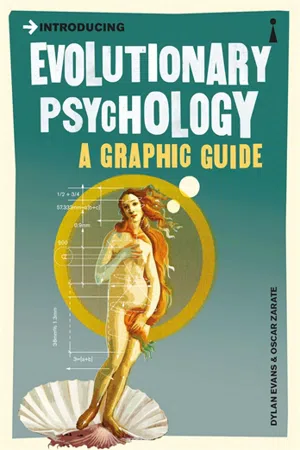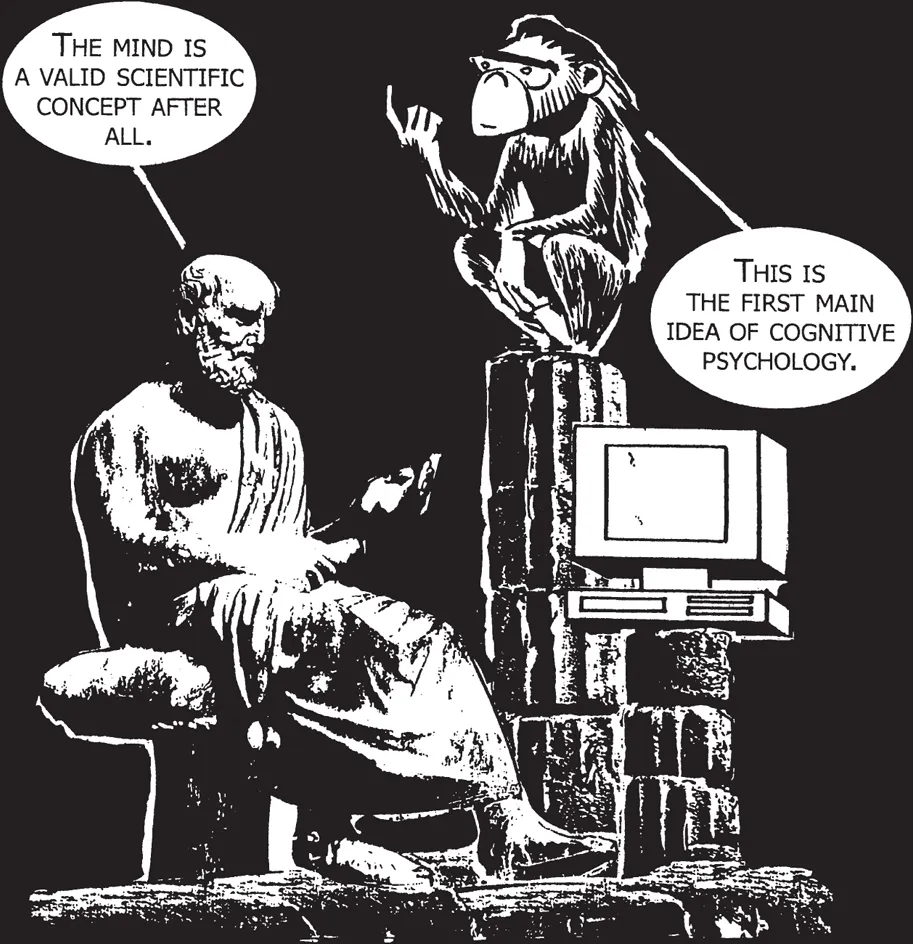
This is a test
- 176 pages
- English
- ePUB (mobile friendly)
- Available on iOS & Android
eBook - ePub
Book details
Book preview
Table of contents
Citations
About This Book
How did the mind evolve? How does the human mind differ from the minds of our ancestors, and from the minds of our nearest relatives, the apes? What are the universal features of the human mind, and why are they designed the way they are? If our minds are built by selfish genes, why are we so cooperative? Can the differences between male and female psychology be explained in evolutionary terms? These questions are at the centre of a rapidly growing research programme called evolutionary psychology.
Frequently asked questions
At the moment all of our mobile-responsive ePub books are available to download via the app. Most of our PDFs are also available to download and we're working on making the final remaining ones downloadable now. Learn more here.
Both plans give you full access to the library and all of Perlego’s features. The only differences are the price and subscription period: With the annual plan you’ll save around 30% compared to 12 months on the monthly plan.
We are an online textbook subscription service, where you can get access to an entire online library for less than the price of a single book per month. With over 1 million books across 1000+ topics, we’ve got you covered! Learn more here.
Look out for the read-aloud symbol on your next book to see if you can listen to it. The read-aloud tool reads text aloud for you, highlighting the text as it is being read. You can pause it, speed it up and slow it down. Learn more here.
Yes, you can access Graphic Guides by Dylan Evans,Oscar Zarate in PDF and/or ePUB format, as well as other popular books in Psychology & Applied Psychology. We have over one million books available in our catalogue for you to explore.
Information
What is Evolutionary Psychology?
Evolutionary psychology is the combination of two sciences – evolutionary biology and cognitive psychology. These two sciences are like two pieces of a jigsaw puzzle. We need both pieces if we want to understand human behaviour.
We will begin by looking at each of these sciences separately. Then we will see how evolutionary psychology puts them together to arrive at a complete scientific account of human nature.

Cognitive Psychology
Cognitive psychology is the most powerful theory of the mind ever developed. It has transformed psychology from a vague set of unclear ideas into a true science. There are two main ideas.
(1)
Actions are caused by mental processes.
(2)
The mind is a computer.

you mean, the mind is like a computer? no, and you’ll see why in a moment ...
Let’s have a look at these two ideas in more detail.
Actions Are Caused by Mental Processes
Psychology is the science of human behaviour. It attempts to explain why humans act the way they do.
We are all amateur psychologists. We constantly offer explanations for our actions and for the actions of others. For example, when I see Jim pick up an umbrella as he leaves the house, I might explain this action in the following way.

jim thinks it’s going to rain, and he wants to stay dry. this kind of explanation is called a mentalistic explanation because it refers to mental processes like beliefs and desires.
When we say that “Jim thought it was going to rain”, we are saying that Jim had a certain belief. When we say that “Jim wanted to stay dry”, we are saying that Jim had a certain desire.
Behaviourist Psychology
When we explain actions by referring to beliefs and desires, we are claiming that these mental processes are the causes of our actions. This way of explaining actions in terms of beliefs and desires is so common that philosophers call it “commonsense psychology” or “folk psychology”. Folk psychology has been around for thousands of years.
In the 1920s, some psychologists claimed that folk psychology was unscientific. J.B. Watson (1878-1958) and B.F. Skinner (1904-90) argued that beliefs, desires and other mental processes were not real things. They thought that the only way for psychology to become a true science was to give up talking about such “mythical entities”.

it isn’t necessary to refer to “the mind” when explaining behaviour. behaviour is not caused by thoughts, but by external stimuli.
This view is known as Behaviourism. From the 1920s until the 1960s, most psychologists were Behaviourists. During these years, most psychologists denied the existence of “the mind”.
In the 1960s, psychologists began to reject behaviourism. There were two main reasons for this. On the one hand, as a purely logical matter, philosophers realized that they simply could not eliminate talk about beliefs and desires from explanations of human behaviour. On the other hand, the development of computers, and work in artificial intelligence, provided a way of testing – and refuting – Behaviourist theories of learning.
With the abandonment of Behaviourism, it once again became acceptable for scientists to talk about “the mind”.

the mind is a valid scientific concept after all. this is the first main idea of cognitive psychology.
In this sense, cognitive psychology has a lot in common with folk psychology. Like folk psychology, cognitive psychology explains actions by referring to mental processes. Unlike folk psychology, however, cognitive psychology has a very precise idea of what these mental processes are – they are computations. This takes us on to the second main idea of cognitive psychology.
The Mind is a Computer
The second main idea of cognitive psychology is that the mind is a computer program. But cognitive psychologists mean something very special by the term “computer”. Basing themselves on the pioneering work of the British mathematician Alan Turing (1912-54), cognitive psychologists define a computer as a set of operations for processing information.

in othe words, a computer is not a physical machine, but rather an abstract specification of a possible machine. a computer, in this sense, may be built in many different ways.
Many different sorts of physical machine could process information in the same way. In this case, even though the machines would have physically different designs, they would all be the same kind of computer.
So, a computer is not a piece of hardware, but a piece of software. The essence of a computer does not lie in the materials from which it is made, but in the programs it executes. In order to run a program, such as a computer game, you need a machine to run it on. But you can run the same program on different kinds of machine.

The machines are physically different, but when you install the same program on them, they behave in the same way.

the key to the behaviour is the program, not the materials out of which the machine is made.
For cognitive psychology, then, the mind is a piece of software. It is a very complicated kind of program. Cognitive psychologists can describe this program in the language of information-processing without needing to describe the details of the brain. The brain is just the physical machine that runs the program called the mind. The ...
Table of contents
- Cover
- Title Page
- Copyright
- Contents
- What is Evolutionary Psychology?
- Further Reading
- The Author
- Acknowledgements
- Index